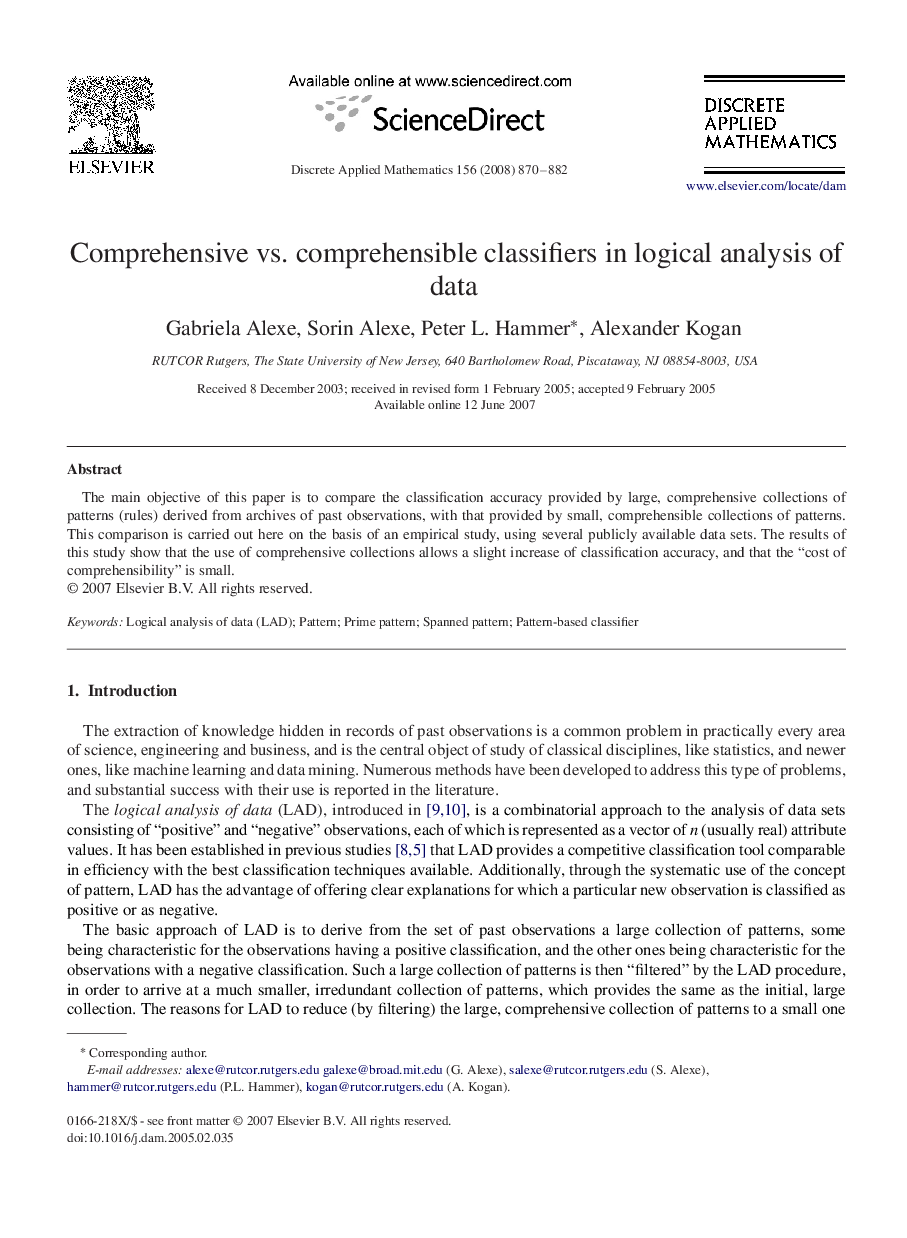| Article ID | Journal | Published Year | Pages | File Type |
|---|---|---|---|---|
| 419916 | Discrete Applied Mathematics | 2008 | 13 Pages |
Abstract
The main objective of this paper is to compare the classification accuracy provided by large, comprehensive collections of patterns (rules) derived from archives of past observations, with that provided by small, comprehensible collections of patterns. This comparison is carried out here on the basis of an empirical study, using several publicly available data sets. The results of this study show that the use of comprehensive collections allows a slight increase of classification accuracy, and that the “cost of comprehensibility” is small.
Related Topics
Physical Sciences and Engineering
Computer Science
Computational Theory and Mathematics
Authors
Gabriela Alexe, Sorin Alexe, Peter L. Hammer, Alexander Kogan,
